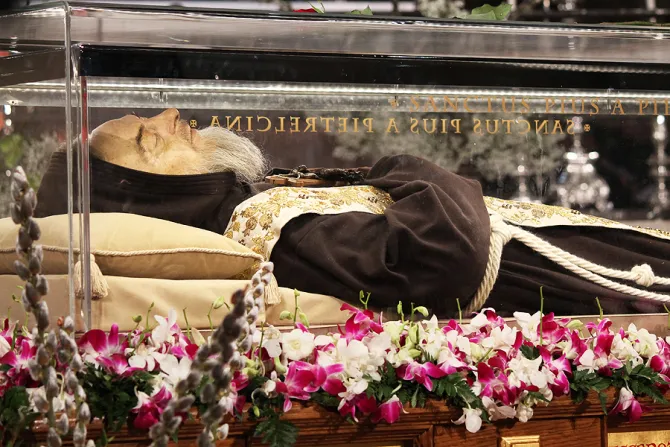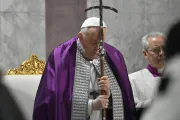After Mass Feb. 11 for the feast of Our Lady of Lourdes, which will be presided over by Archbishop Rino Fisichella, Prefect of the Pontifical Council for the Promotion of the New Evangelization, St. Pio's relics will be taken for three days to Pietrelcina for the first time since he left as a young priest.
It is said that while alive Padre Pio, who never left San Giovanni Rotonto after being assigned there, was asked if he would ever return to his childhood hometown of Pietrelcina. In response, the saint said that he would return one day, but not until after his death.
At a Jan. 29 press briefing on the arrival of the relics, Archbishop Fisichella said that their presence in Rome "is of great significance for it is an unprecedented event, given the stories of these two saints who spent their lives in the service of the mercy of God."
St. Pio of Pietrelcina, colloquially known as "Padre Pio," was a priest of the Order of the Friars Minor Capuchin, a stigmatist, and a mystic, who lived from 1887-1968. He was beatified in 1999, and canonized in 2002 by St. John Paul II. He was born in Pietrelcina, but ministered in San Giovanni Rotondo from 1916 until his death.
His brother friar St. Leopold Mandic, also a Capuchin, was born in 1866 in Croatia, but spent the majority of his life in the northern Italian city of Padua, where his relics remain to this day. For nearly 30 years he would spend 10-15 hours a day in the confessional, and was known for being generous with forgiveness and mercy. He died in 1942, and was canonized by St. John Paul II Dec. 16, 1983.
In a Jan. 29 interview with CNA, Archbishop Fisichella, President of the Pontifical Council for the Promotion of the New Evangelization, said the presence of the saints' bodies is "an exceptional event," particularly because they will come during an extraordinary jubilee.
"The desire of the Holy Father was to give all the priests in the world, but especially to the missionaries of mercy, a sign," he said, adding that "where can we find a better sign of sanctity, of holiness, of dedication, total dedication to confession (than) in Padre Pio and in Padre Leopoldo?"
Elise Harris was senior Rome correspondent for CNA from 2012 to 2018.




